Montana embodies the classic spirit of the American West, a place where rugged landscapes meet a rich history. As the fourth-largest state by area but one of the least populated in the United States, Montana offers vast, uncrowded natural spaces that define the “Big Sky Country” experience. These untouched areas, combined with vibrant towns and historical sites, make exploring Montana Tourist Attractions an unforgettable adventure.
From soaring mountain peaks to serene rivers and deep historical roots, Montana provides diverse attractions for every type of traveler. Whether you’re seeking outdoor thrills, a connection to the past, or simply breathtaking scenery, the state delivers. Discover why Montana is often called the “Last Best Place” through its premier tourist destinations and activities.
Explore Glacier National Park, Crown of the Continent
Glacier National Park, often hailed as the “Crown of the Continent,” is a jewel in Northwest Montana’s landscape. This extraordinary natural area boasts dramatic mountain ranges, lush alpine meadows, dense forests, cascading waterfalls, countless pristine lakes, and remnants of ancient glaciers. It’s a true haven for adventurers and nature lovers, drawing visitors back year after year with its iconic and ever-changing scenery.
The engineering marvel that is the Going-to-the-Sun Road spans 50 miles and serves as the park’s only paved route crossing the Continental Divide. Ascending to the 6,646-foot Logan Pass, this road connects St. Mary to Apgar Village and West Glacier. The drive itself is a world-class experience, offering unparalleled panoramic views and access to numerous trailheads and viewpoints along the way.
The park is a major destination for hiking enthusiasts, featuring over 700 miles of trails ranging from easy strolls to challenging climbs. Among the most celebrated hiking routes are the paths to Grinnell Glacier, the Ptarmigan Tunnel, and the spectacular Highline Trail, known for its dramatic cliffside traverses. While day hikes are popular, the park’s extensive backcountry also attracts those seeking multi-day wilderness adventures.
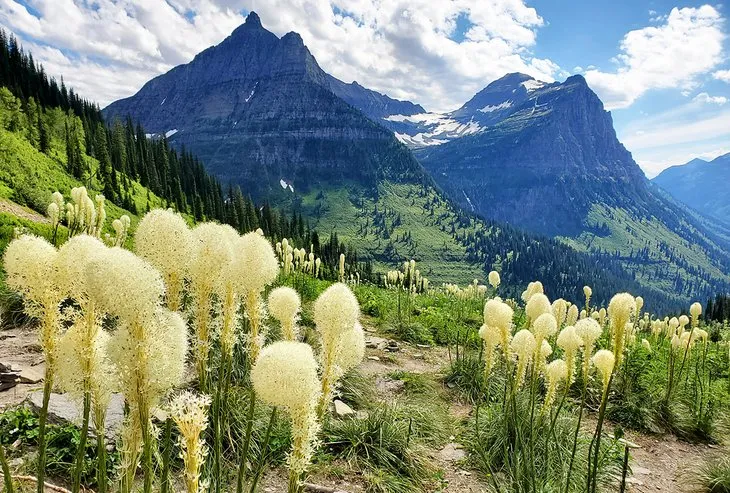 Bear-grass in Glacier National ParkBear-grass blooms in a scenic meadow, a common sight among Montana tourist attractions like Glacier National Park.
Bear-grass in Glacier National ParkBear-grass blooms in a scenic meadow, a common sight among Montana tourist attractions like Glacier National Park.
Discover Montana’s Expansive National Forests
Montana is home to a remarkable seven national forests, covering nearly 20 million acres of public land. This immense, open wilderness is central to the Montana experience, and any visit would be incomplete without exploring some of these protected natural treasures. From the northern Kootenai to the sprawling Custer-Gallatin, the western part of the state hosts the majority of these national forests.
Cities like Missoula, home to the University of Montana, serve as excellent gateways to nature, with at least five national forests accessible within a short drive. Lolo National Forest directly borders the city, providing residents and visitors convenient access to popular adventure areas such as Rattlesnake and Blue Mountain National Recreation Areas, ideal for hiking, biking, and wildlife viewing.
Further south, Bozeman, home to Montana’s other state university, is another prime location for accessing public lands. While several forests are nearby, the Custer-Gallatin National Forest is a primary draw. Located south of Bozeman, this forest extends past the adventure hub of Big Sky and connects directly to the northern boundary of Yellowstone National Park, offering vast opportunities for exploration.
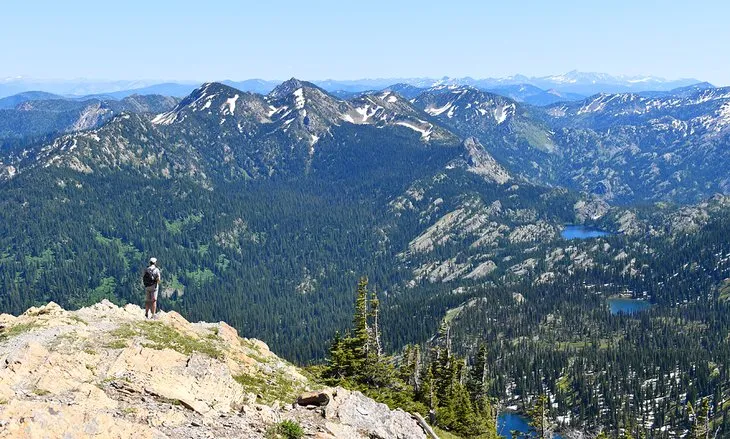
Hiking in Jewel Basin, within Flathead National ForestA hiker explores the trails in Jewel Basin, part of Flathead National Forest, showcasing the natural beauty of Montana tourist attractions.
Skiing and Snowboarding at Big Sky Resort
Located about an hour’s drive south of Bozeman, Big Sky Resort is renowned for having some of the “Biggest Skiing in America.” The resort boasts an impressive average snowfall of 400 inches per year, attracting thousands of skiers and snowboarders each winter. Despite its popularity, the sheer size of 5,750 skiable acres ensures there’s ample space for everyone to enjoy the slopes.
Visiting Big Sky offers a complete resort experience. Amenities include heated eight-person chairlifts, a lively base village with restaurants and après-ski entertainment, and high-quality services. Big Sky provides a premier downhill experience among Montana Tourist Attractions. A significant upgrade for the 2023/24 season was the new Lone Peak Tram, offering breathtaking sightseeing rides to the summit and challenging expert terrain for skilled skiers and riders.
While Big Sky is a highlight, Montana offers several other excellent ski destinations. Lost Trail Powder Mountain, near the Idaho border, is a favorite among locals for its deep powder. In the north, Whitefish Mountain Resort provides stunning views of the adjacent Glacier National Park while offering fantastic skiing. Other popular spots like Montana Snowbowl near Missoula and Bridger Bowl near Bozeman are easily accessible from the state’s main university cities.
Discover the Best of What to Do in Downtown Denver – Your Ultimate Guide
Discover the Best Brunch in Denver – A Local’s Guide
Top 10 Places to Visit in Nevada with Family for an Epic Trip
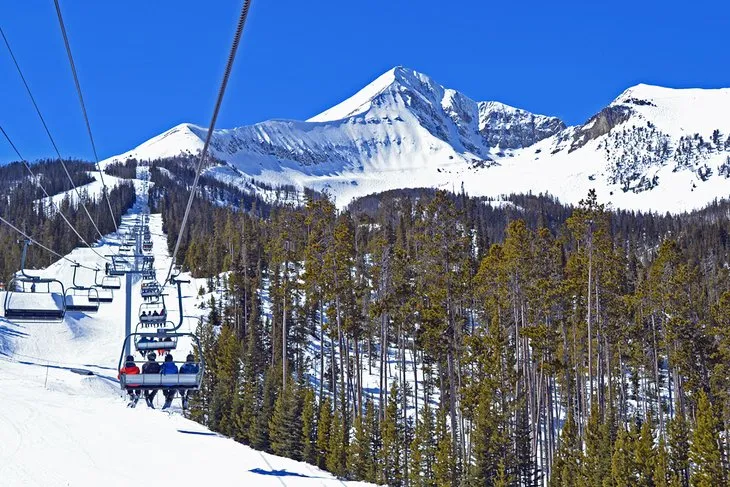 Big Sky ResortA view of Big Sky Resort slopes, a major destination for winter sports enthusiasts exploring Montana tourist attractions.
Big Sky ResortA view of Big Sky Resort slopes, a major destination for winter sports enthusiasts exploring Montana tourist attractions.
World-Class Fly Fishing in Blue Ribbon Rivers
Montana’s reputation as a premier fly-fishing destination was cemented by the 1992 movie A River Runs Through It. However, anglers have long known about the state’s abundance of clear mountain streams and rivers perfect for casting a line. The film, based on Norman Maclean’s 1972 novella, is largely set on the Blackfoot River, while many of its most iconic fishing scenes were filmed on the picturesque Gallatin River. Both rivers are known for their productive seasonal hatches and stunning mountain backdrops.
Beyond the Blackfoot and Gallatin, Montana is home to world-renowned fly fishing on major rivers like the Madison, Missouri, and Yellowstone Rivers. The state also features thousands of smaller mountain streams and creeks teeming with trout. For visitors looking to experience Montana fly fishing, connecting with a local guide shop is highly recommended. Guides offer expertise on local conditions, hatches, and techniques, ensuring a more successful and enjoyable day on the water.
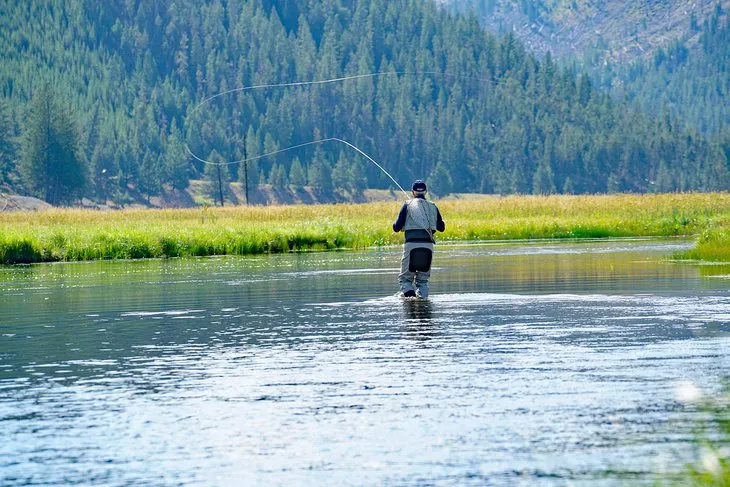 Fly fisherman on the Madison RiverA fly fisherman casts a line on the Madison River, showcasing a popular activity among Montana tourist attractions.
Fly fisherman on the Madison RiverA fly fisherman casts a line on the Madison River, showcasing a popular activity among Montana tourist attractions.
Witness Wildlife at the Grizzly and Wolf Discovery Center
The Grizzly and Wolf Discovery Center in West Yellowstone offers a unique and safe opportunity to observe grizzly bears and gray wolves up close. Located near the western entrance of Yellowstone National Park, this center is a must-visit excursion when exploring Montana Tourist Attractions in the region. It serves as a sanctuary for animals that cannot survive in the wild.
The center allows visitors to see these magnificent animals in naturalistic habitats while learning about their behavior, history, and conservation challenges. Highlights include watching bears forage, play in their ponds, and interact, as well as the chance to hear the captivating howls of the wolf packs, often heard most frequently in the mornings and evenings.
In addition to the bears and wolves, the facility features an engaging indoor exhibit called “Banks of the Yellowstone.” This dynamic riparian display showcases local aquatic life, including cutthroat trout and river otters, further highlighting the region’s diverse ecosystem. The center provides valuable educational insights into the importance of wildlife conservation in the Greater Yellowstone Area.
Address: 201 S. Canyon Street, West Yellowstone, Montana
Official site: www.grizzlydiscoveryctr.org
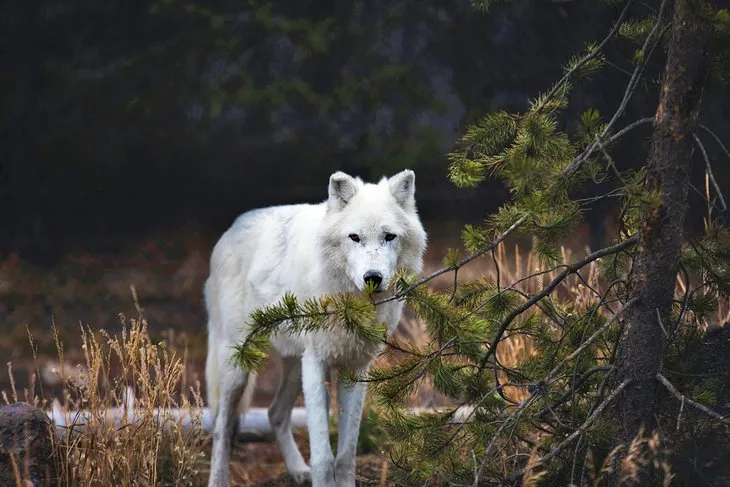 Gray wolf at the Grizzly and Wolf Discovery CenterA gray wolf observed at the Grizzly and Wolf Discovery Center, offering a chance to see key species among Montana tourist attractions.
Gray wolf at the Grizzly and Wolf Discovery CenterA gray wolf observed at the Grizzly and Wolf Discovery Center, offering a chance to see key species among Montana tourist attractions.
Step Back in Time at the Museum of the Rockies
The Museum of the Rockies significantly contributes to Bozeman’s status as one of Montana’s leading cities. This institution, affiliated with the Smithsonian Institution, is globally recognized for its exceptional displays of dinosaurs and dinosaur eggs. The collection features skeletons and highly realistic models of numerous dinosaur species discovered throughout the state, making it a key stop for paleontology enthusiasts exploring Montana Tourist Attractions.
Among its most prized possessions, the museum houses one of the largest dinosaur collections in the United States, including the world’s biggest Tyrannosaurus skull. Other fascinating exhibits include a T-Rex thighbone containing soft-tissue remains and the iconic T-Rex skeleton named “Big Mike,” which greets visitors at the entrance. These impressive prehistoric artifacts offer deep insights into the ancient history of the region.
The museum’s scope extends beyond dinosaurs, however. It features a dynamic “Welcome to Yellowstone Country” exhibit detailing the region’s transformation into a major tourism destination. Other exhibits cover the history of the area’s native peoples, Western art collections, and the historic Tinsley House, a preserved pioneer log home dating back to the late 1800s, offering a glimpse into frontier life.
Address: 600 W. Kagy Blvd, Bozeman, Montana
Official site: https://www.museumoftherockies.org/
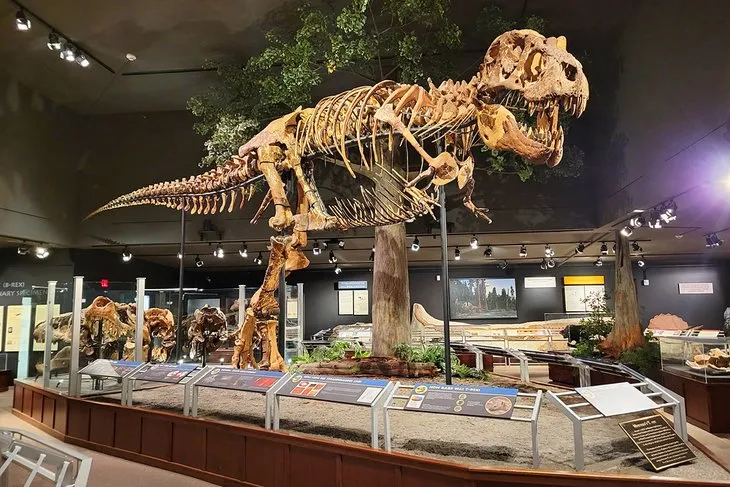 Museum of the RockiesThe Museum of the Rockies in Bozeman, known for its dinosaur exhibits, stands out among Montana tourist attractions for its historical insights.
Museum of the RockiesThe Museum of the Rockies in Bozeman, known for its dinosaur exhibits, stands out among Montana tourist attractions for its historical insights.
Access Yellowstone National Park from Montana Entrances
Montana provides two primary access points to Yellowstone National Park, the first national park in the United States. These entrances, the West Entrance and the North Entrance, are flanked by charming gateway communities that are enjoyable to explore in their own right. Once inside, visitors are welcomed into a world of adventure spanning over two million acres of unparalleled natural wonders.
From the vibrant town of West Yellowstone, the West Entrance leads directly into the heart of geyser country. Approximately 14 miles from the entrance lies the iconic Madison Junction, where the road splits, guiding visitors to some of Yellowstone’s most famous attractions. Heading north leads to the Norris Geyser Basin, home to the powerful Steamboat Geyser, while the Lower, Midway, and Upper Geyser Basins to the south feature prominent sights like the colorful Grand Prismatic Spring and the world-renowned Old Faithful geyser.
The North Entrance of Yellowstone is situated in Gardiner, Montana. This entrance is easily reached via a scenic 90-minute drive through the beautiful Paradise Valley from Bozeman. Just beyond the park gates, the Boiling River, a unique hot spring where visitors can soak, offers immediate appeal. Further into the park, the Mammoth Hot Springs area presents stunning travertine terraces and a glimpse into the park’s rich history as a popular destination.
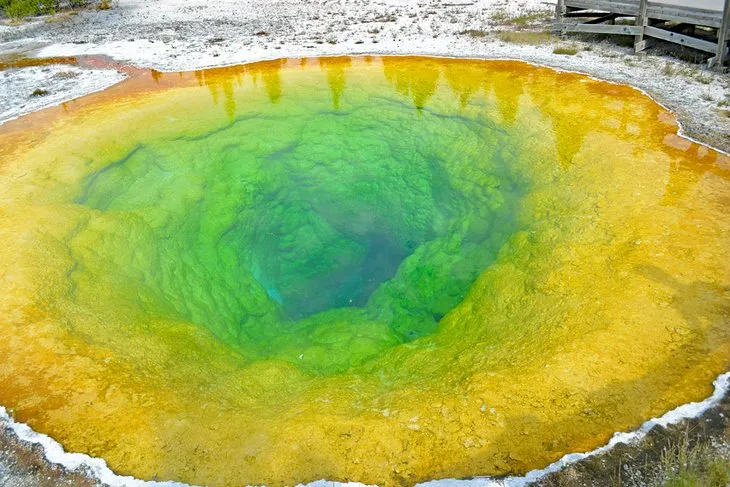 Morning Glory Pool, Yellowstone National ParkThe vibrant colors of Morning Glory Pool in Yellowstone National Park, accessible from Montana, are a stunning example of natural Montana tourist attractions.
Morning Glory Pool, Yellowstone National ParkThe vibrant colors of Morning Glory Pool in Yellowstone National Park, accessible from Montana, are a stunning example of natural Montana tourist attractions.
Delve into Mining History at the World Museum of Mining
Butte, once famously known as the “Richest Hill on Earth,” holds the title of Montana’s most historically significant city. Its origins trace back to the late 1800s, when the copper mining industry fueled its rapid growth. At one point, Butte was Montana’s largest city and the most populous urban center between Chicago and San Francisco, a testament to its mining prosperity.
Although significant mining operations continued until the 1980s, they never quite reached the scale of the early 1900s peak. Today, Butte proudly displays this rich history and culture, making it one of Montana’s fascinating places to visit. The World Museum of Mining is an excellent starting point for anyone wishing to explore the city’s deep connection to the mining industry.
The museum is centered around a meticulously restored mining camp featuring more than three dozen historic buildings and structures. This area was once part of a community known as Hell Roarin’ Gulch, situated at the base of a silver and zinc mine that is now inactive. Highlights include the immense headframe, the tower above the mineshaft, and informative underground tours that offer a firsthand look at the mining environment.
Other noteworthy mining-related attractions in Butte include the Copper King Mansion, built in 1888. This elaborate 24-room Victorian home is filled with original artifacts reflecting the wealth generated during the city’s boom years. The Mineral Museum is also worth visiting, housing over 1,300 specimens, including a remarkable 27-and-a-half-troy-ounce gold nugget, showcasing the valuable resources extracted from the area.
Address: 155 Museum Way, Butte, Montana
Official site: https://miningmuseum.org/
 World Museum of MiningHistoric structures at the World Museum of Mining in Butte, preserving the heritage of Montana’s mining past among its tourist attractions.
World Museum of MiningHistoric structures at the World Museum of Mining in Butte, preserving the heritage of Montana’s mining past among its tourist attractions.
Tour the Historic State Capitol in Helena
Helena, the capital of Montana, has a history tied to gold discovery, initially named Last Chance Gulch when prospectors decided on one final search before hitting paydirt. The city boasts one of the most architecturally appealing state capitol buildings in the country. Constructed in a Greek Renaissance style with sandstone and granite, the building is topped with a distinctive copper dome.
Inside, the capitol features several striking murals depicting scenes from Montana’s past, offering cultural insights for visitors exploring Montana Tourist Attractions. A notable mural by the iconic Montana artist Charles M. Russell portrays the historic meeting between Lewis and Clark and the Salish Indians, capturing a pivotal moment in regional history.
Helena’s appeal extends beyond the state capitol. The city maintains a vibrant culture that reflects its gold-digging roots. Historic areas like Reeder’s Alley, with its preserved frontier buildings, coexist with modern art galleries and trendy shops, creating a unique urban environment.
Furthermore, Helena serves as an excellent base for exploring the surrounding Montana countryside. The two-million-acre Helena-Lewis and Clark National Forest encircles the city, providing abundant opportunities for fishing, hiking, backpacking, and viewing big game. For immediate outdoor access, the extensive Mount Helena City Park is conveniently located within walking distance of the downtown area, offering trails and scenic views.
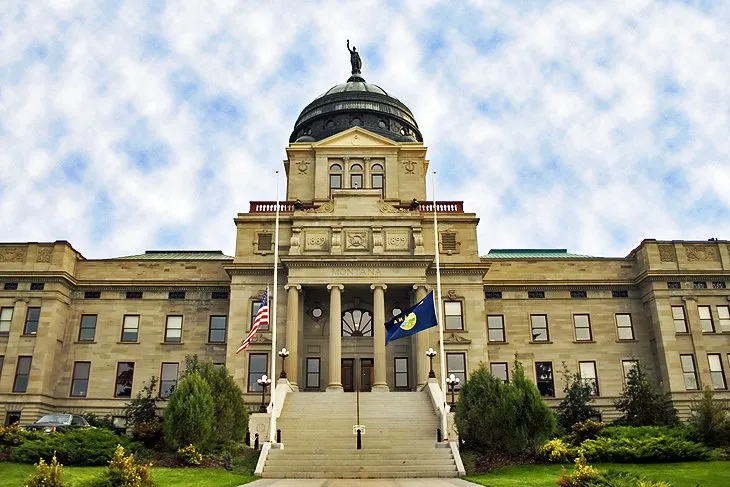 State Capitol Building, HelenaThe Montana State Capitol Building in Helena, an architectural landmark among the state’s tourist attractions.
State Capitol Building, HelenaThe Montana State Capitol Building in Helena, an architectural landmark among the state’s tourist attractions.
Enjoy the Scenic Shoreline of Flathead Lake
Flathead Lake holds the distinction of being the largest natural freshwater lake in the American West, excluding Alaska. Located in the northwest part of Montana, approximately 25 miles south of Whitefish, the lake boasts over 160 miles of shoreline, making for a considerable and scenic drive around its perimeter. Its vast size and clear waters are a major draw for those seeking natural beauty and outdoor recreation among Montana Tourist Attractions.
Boating and related water activities are immensely popular on Flathead Lake, which is known for its remarkably clear water and deep sections. The adventure isn’t limited to the water; the shoreline is dotted with hiking trails and parks managed by both Montana Fish, Wildlife & Parks and the Confederated Salish and Kootenai Tribes, offering diverse recreational opportunities.
Small towns like Polson and Bigfork are located along the lake’s edge, providing essential services such as restaurants, shops, and boat rentals, catering to visitors. Less than 15 miles north, Kalispell offers another charming Montana city experience and is a convenient place to find lodging when exploring the Flathead Lake area and nearby attractions like Glacier National Park.
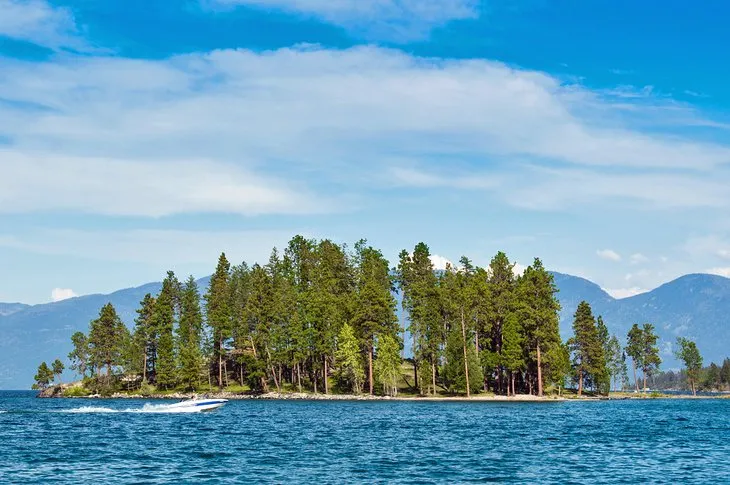 Flathead LakeA view of the vast Flathead Lake shoreline, offering scenic beauty and recreation opportunities among Montana tourist attractions.
Flathead LakeA view of the vast Flathead Lake shoreline, offering scenic beauty and recreation opportunities among Montana tourist attractions.
Go Underground at Lewis and Clark Caverns State Park
Located between Butte and Bozeman, Lewis and Clark Caverns is Montana’s first state park and a popular destination for underground exploration. Access to the cavern’s impressive depths is exclusively through guided tours led by park staff. During the summer season, three different tours are available, catering to varying levels of ability and interest. A unique Winter Holiday Candlelight Tour is also offered during the colder months, providing a different ambiance.
Lewis and Clark Caverns rank among the largest limestone caverns in the world. Inside, visitors can see colossal cave formations. Tours follow well-maintained concrete walkways and avoid navigating through narrow or tight spaces, making them accessible for many. For those seeking a more challenging adventure, the state park offers a unique three-hour Wild Cave Tour that includes crawling through undeveloped passages.
Beyond the cavern itself, the state park’s aboveground area provides hiking trails and a visitor center with interpretive information about the caverns and the surrounding environment. The park also offers campground facilities above ground, including cabins, tipis, and group campsites, providing overnight options for visitors. Reservations are highly recommended for both campsites and cave tours due to their popularity.
Address: 25 Lewis & Clark Caverns Road, Whitehall, Montana
Official site: https://fwp.mt.gov/stateparks/lewis-and-clark-caverns/
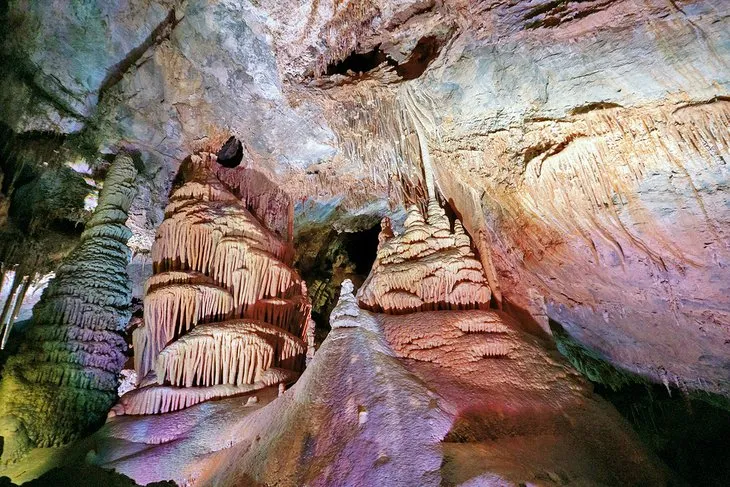 Paradise Room, Lewis and Clark CavernsThe formations inside the Paradise Room at Lewis and Clark Caverns State Park, a unique underground experience among Montana tourist attractions.
Paradise Room, Lewis and Clark CavernsThe formations inside the Paradise Room at Lewis and Clark Caverns State Park, a unique underground experience among Montana tourist attractions.
Indulge in a Soak at Montana’s Hot Springs
Montana is blessed with numerous natural hot springs, many of which have been developed into facilities offering relaxing soaks. Most mainstream hot springs in the state feature pools where natural hot water is piped in, providing a comfortable and therapeutic experience. These facilities vary in size and style and are predominantly found in the western half of Montana, attracting visitors seeking relaxation and natural healing.
One of the most highly-rated hot springs in Montana is Quinn’s Hot Springs Resort, situated alongside the Clark Fork River in Paradise, about an hour northwest of Missoula. This beautiful resort has recently expanded its natural outdoor pools within its scenic, landscaped grounds. Quinn’s also offers various lodging options, including lodge rooms and cabins, and features the decadent Hardwood House Restaurant for dining.
For a dose of history and charm, Chico Hot Springs is a popular choice. Established in 1900, this historic resort offers a large open-air pool set against a backdrop of unique ambiance. Its prime location in the stunning Paradise Valley, near the Yellowstone River and a short scenic drive to Yellowstone National Park, adds to its appeal, making it a memorable stop among Montana tourist attractions.
Other notable soaking spots include Lolo Hot Springs near the Idaho border and Elkhorn Hot Springs nestled in the Pioneer Mountains. Yellowstone Hot Springs, located 30 miles south of Chico Hot Springs, is a newer facility that boasts one of the state’s best outdoor soaking pools, offering panoramic views of the surrounding landscape.
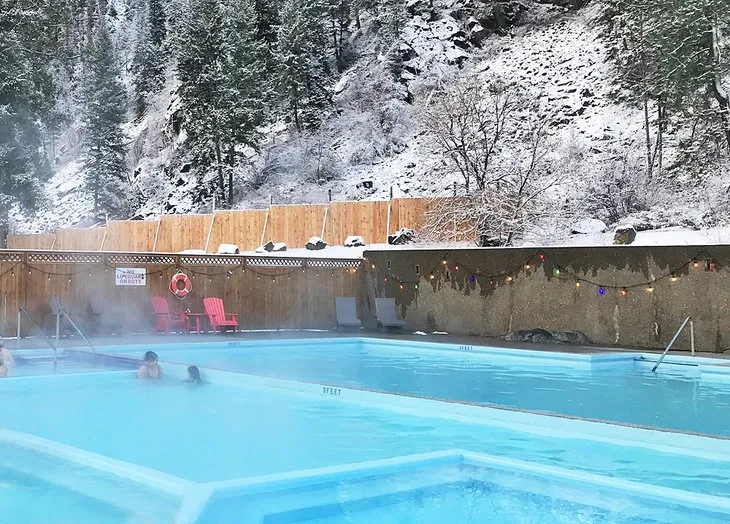 Quinn’s Hot SpringsVisitors relaxing in the pools at Quinn’s Hot Springs Resort, a popular destination for soaking among Montana tourist attractions.
Quinn’s Hot SpringsVisitors relaxing in the pools at Quinn’s Hot Springs Resort, a popular destination for soaking among Montana tourist attractions.
Get Inspired at the C.M. Russell Museum Complex
Located in Great Falls, the C.M. Russell Museum complex is dedicated to the life and work of the celebrated American artist Charles M. Russell, widely known as the “Cowboy Artist.” The museum houses a vast collection of documents, artifacts related to Russell’s career from the late 19th and early 20th centuries, and an extensive collection of original paintings. It’s a key cultural highlight for those exploring Montana Tourist Attractions with an interest in Western art and history.
A special highlight of visiting the complex is touring the original Russell House and Studio, which has been designated a National Historic Landmark. Visitors can also explore the museum’s Russell Riders Sculpture Garden, featuring statues of local wildlife and Western figures. The museum includes entire wings dedicated to Russell’s contemporaries, offering a broad and diverse collection of Western artworks that provide context to Russell’s significant contributions.
The city of Great Falls itself offers several other attractions that can complement a visit to the museum. The Lewis and Clark Interpretive Center provides fascinating insights into a different aspect of regional history, detailing the famous expedition’s journey through the area. Natural spaces are also abundant, including Giant Springs State Park and Gibson Park, many connected by the scenic River’s Edge Trail, perfect for walking or biking.
Address: 400 13th Street N., Great Falls, Montana
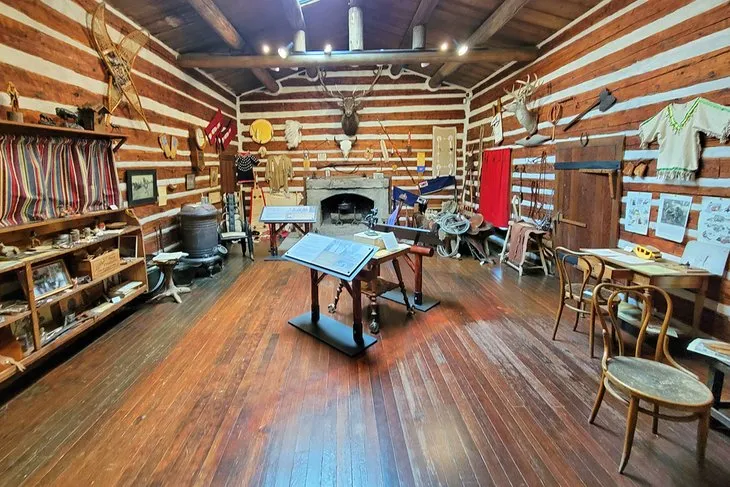 The C.M. Russell Museum ComplexThe C.M. Russell Museum Complex in Great Falls, dedicated to the famous “Cowboy Artist,” is a significant cultural site among Montana tourist attractions.
The C.M. Russell Museum ComplexThe C.M. Russell Museum Complex in Great Falls, dedicated to the famous “Cowboy Artist,” is a significant cultural site among Montana tourist attractions.
Spot the Iconic Smelter Stack in Anaconda
Anaconda is a historic town in Western Montana, dating back to the late 1800s when it thrived as a center for the copper mining industry. Its rich past is visible throughout the town, most notably marked by a preserved smelter stack that remains a towering landmark on the horizon. Today, Anaconda has reinvented itself as a vacation destination, blending modern amenities with a rustic feel and offering easy access to the great outdoors.
Among the appealing activities in Anaconda are adventures at nearby hot springs and skiing or snowboarding at the Discovery Ski Area. Anaconda is also home to the Jack Nicklaus-designed Old Works Golf Course. This unique 18-hole course is built on an old refinement site and notably features black “slag” bunkers, a byproduct from the town’s smelting operations, offering a visually distinctive golfing experience.
Anaconda is located near the southern end of the Pintler Veteran’s Memorial Scenic Highway. This 64-mile route serves as a beautiful alternative to I-90 and is a recommended path for travelers venturing between Yellowstone and Glacier National Parks, offering stunning views and access to numerous trailheads. The Scenic Highway also acts as a launching point for outdoor explorations into the surrounding Beaverhead-Deerlodge National Forest.
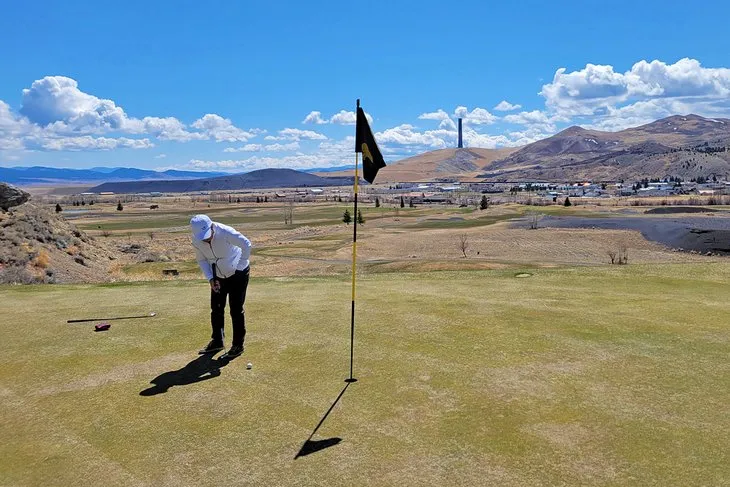 Golfing at Old Works with the smelter stack in the backgroundGolfers play a round at the unique Old Works Golf Course in Anaconda, with the historic smelter stack visible in the background, a distinctive Montana tourist attraction.
Golfing at Old Works with the smelter stack in the backgroundGolfers play a round at the unique Old Works Golf Course in Anaconda, with the historic smelter stack visible in the background, a distinctive Montana tourist attraction.
Drive the Scenic Beartooth Highway
Located in southwest Montana and extending into Wyoming, the Beartooth Highway is recognized as an All-American Road and is celebrated as a true engineering marvel. Often compared to Glacier’s Going-to-the-Sun Road but typically less crowded, this 68-mile route climbs dramatically via switchbacks over a mountain pass, offering genuinely fantastic, high-altitude views. It’s considered one of the most scenic drives in the country and a highlight of Montana Tourist Attractions for road trip enthusiasts.
The journey begins south of Red Lodge, one of Montana’s charming small towns. The highway then ascends over 5,000 feet to reach Beartooth Pass, standing at an elevation of 10,947 feet, just over the Wyoming border. From the pass, the highway continues west through the Shoshone National Forest, eventually leading to the northeast entrance of Yellowstone National Park, connecting two major natural wonders.
Driving the Beartooth Highway is undoubtedly a bucket-list experience, even if it’s not as widely known as some other Montana adventures. The route is typically open seasonally, usually between Memorial Day and Columbus Day (late May through early October), depending on weather conditions. With numerous hiking trails, campgrounds, and breathtaking landscapes lining the way, planning for ample time to fully enjoy this 68-mile drive is essential.
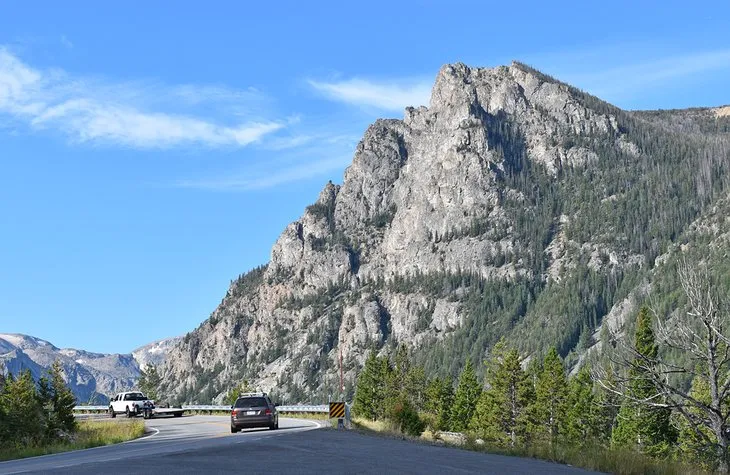 Beartooth HighwayThe winding road of the Beartooth Highway offering stunning mountain vistas, a top scenic drive among Montana tourist attractions.
Beartooth HighwayThe winding road of the Beartooth Highway offering stunning mountain vistas, a top scenic drive among Montana tourist attractions.
Step Inside the Moss Mansion in Billings
The Moss Mansion Historic House Museum is one of the most significant historical landmarks in Billings, commanding attention with its large red sandstone structure that dominates the surrounding neighborhood. This 28-room mansion, designed by renowned New York architect Henry Janeway Hardenbergh (whose works include famous hotels like the Waldorf Astoria and The Plaza), was completed in 1903 and is a must-see for history buffs exploring Montana Tourist Attractions in the area.
Stepping inside the mansion is like traveling back in time, with original draperies, fixtures, furniture, Persian carpets, and various artifacts preserved from the era. Visitors can explore the mansion through both guided and self-guided tours, gaining insight into the opulent lifestyle of the Moss family and the period. The site also hosts temporary displays, exhibits, and seasonal events and festivals, adding to its appeal.
Billings is Montana’s largest city, with over 100,000 residents, offering a variety of attractions beyond the fascinating history of the Moss Mansion. The city is set against a dramatic landscape, notably the massive Rimrocks formations that jut through the city center. Other notable attractions include ZooMontana, the Yellowstone Art Museum, and the nearby Pictograph Cave State Park, providing diverse experiences for visitors.
Address: 914 Division Street, Billings, Montana
Official site: www.mossmansion.com
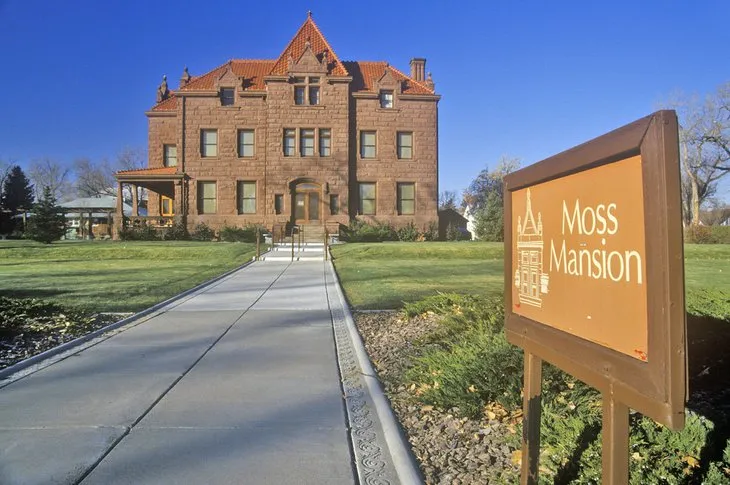 Moss MansionThe historic Moss Mansion in Billings, an architectural landmark among Montana tourist attractions.
Moss MansionThe historic Moss Mansion in Billings, an architectural landmark among Montana tourist attractions.
Indulge Your Sweet Tooth at The Sweet Palace
In Philipsburg, a charming town situated along the Pintler Veteran’s Memorial Scenic Highway, The Sweet Palace is a veritable paradise for anyone with a love for candy. This old-fashioned candy shop is lined with rows upon rows of candy jars, offering a dizzying array of flavors and confectionary styles. Visitors can fill bags with their favorites, with most candies priced by the pound, creating a delightful and nostalgic shopping experience.
The Sweet Palace is just one of many appealing activities available in Philipsburg. The town’s main street, where The Sweet Palace is centrally located, features several other local shops and attractions perfect for an afternoon of browsing. This includes places where visitors can shop for and even try their hand at sluicing for Montana sapphires, the city’s most famous precious resource, adding a unique gem-hunting twist to exploring Montana Tourist Attractions in the area.
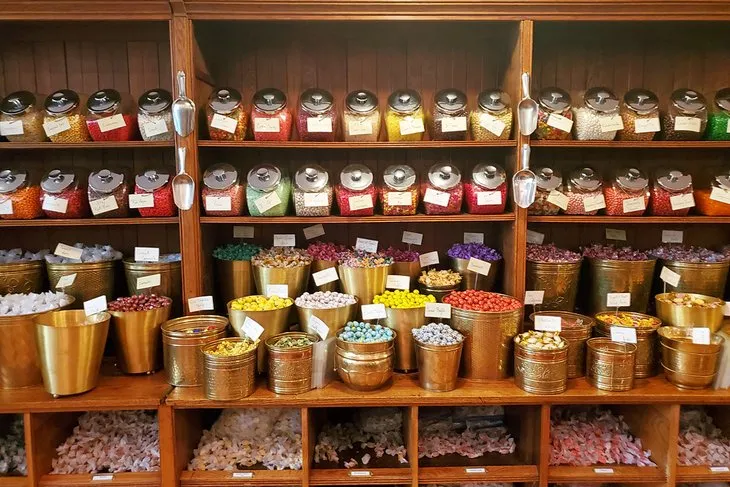 Sweet PalaceThe colorful interior of The Sweet Palace in Philipsburg, a delightful stop for candy lovers among Montana tourist attractions.
Sweet PalaceThe colorful interior of The Sweet Palace in Philipsburg, a delightful stop for candy lovers among Montana tourist attractions.
Wander Through the Ancient Ross Creek Cedars Scenic Area
The Ross Creek Cedars Scenic Area is a remarkable point of interest within the vast Kootenai National Forest. Located in the far northwest corner of Montana, close to the border with the Idaho Panhandle, this ancient grove offers a truly unique experience. Within its approximately 100 acres, visitors step into a world dominated by towering, old-growth trees.
Some of the Western Red Cedars in this scenic area have been growing for over 1,000 years, reaching impressive heights. Visitors can crane their necks to admire these long-living giants along a well-maintained 0.9-mile interpretive path. Taking time along this wide and accessible trail allows for peaceful reflection, accompanied by the soothing sounds of Ross Creek flowing nearby, creating a tranquil natural escape among Montana Tourist Attractions.
Expect some crowds, especially on weekends and throughout the summer months, as Ross Creek is a popular spot. Accessing the scenic area involves driving a bit on a dirt road, so having downloaded maps or GPS coordinates can be helpful for first-time visitors. For those wishing to extend their experience, the hike can be expanded up to four miles along the Ross Creek Trail, providing an opportunity to venture further into the forest and leave the crowds behind, connecting more deeply with nature.
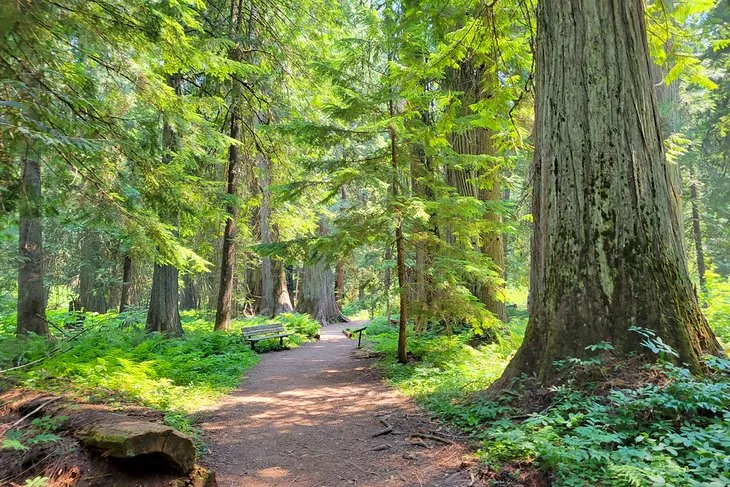 Ross Creek Cedars Scenic AreaAncient cedar trees tower over the interpretive trail at Ross Creek Cedars Scenic Area, a serene natural escape among Montana tourist attractions.
Ross Creek Cedars Scenic AreaAncient cedar trees tower over the interpretive trail at Ross Creek Cedars Scenic Area, a serene natural escape among Montana tourist attractions.
Pay Respects at the Little Bighorn Battlefield National Monument
The Little Bighorn Battlefield National Monument is a poignant site commemorating the historic 1876 conflict between the U.S. Army’s 7th Cavalry and the Lakota Sioux, Northern Cheyenne, and Arapaho tribes. It stands as one of the best-known historical landmarks in the United States and is particularly significant in terms of the subsequent efforts towards reconciliation. This important attraction includes a visitor center, museum, the Custer National Cemetery, the 7th Cavalry Memorial, and the Reno-Benteen Battlefield.
For the most comprehensive understanding of the events at the battlefield, consider booking an Apsaalooke Tour, offered throughout the summer season between Memorial Day and Labor Day. These one-hour, air-conditioned bus tours are provided by the Crow Nation of Tourism and offer valuable perspectives on this significant historic landmark from a Native American viewpoint, enriching the visitor experience.
Address: Interstate 90 Frontage Road, Crow Agency, Montana
Official site: https://www.nps.gov/libi/index.htm
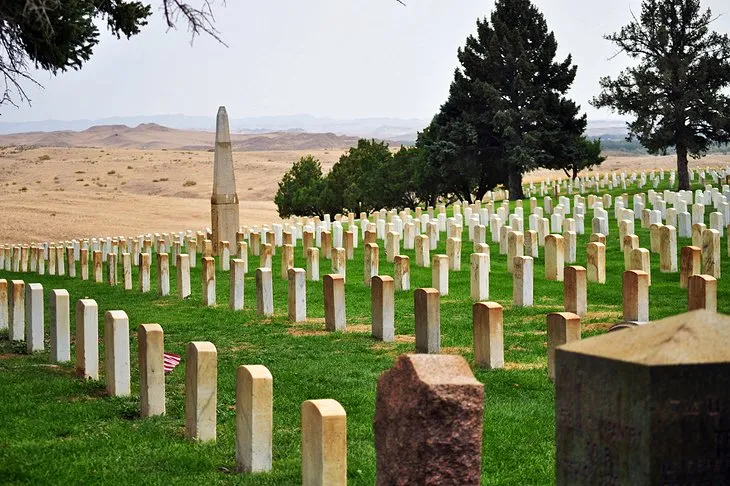 Little Bighorn Battlefield National MonumentMarkers on the field at Little Bighorn Battlefield National Monument, a historical site commemorating a significant event in American history and a somber Montana tourist attraction.
Little Bighorn Battlefield National MonumentMarkers on the field at Little Bighorn Battlefield National Monument, a historical site commemorating a significant event in American history and a somber Montana tourist attraction.
Dive Deep into Western Heritage at the Western Heritage Center
Another notable attraction in Billings is the Western Heritage Center, housed in the beautiful old Parmly Billings Memorial Library building, constructed in 1901. This center features a diverse collection of over 17,000 artifacts, providing deep insights into the history and culture of the Northern High Plains and Yellowstone River Valley. A highlight of the collection is more than 6,000 photos documenting the rich history and cultural evolution of the Yellowstone River region, making it a vital stop for history buffs among Montana tourist attractions.
Opened in 1971 and now proudly affiliated with the Smithsonian Institution, the museum focuses particularly on the preservation of the histories of the Cheyenne and Crow Indians, offering valuable perspectives on their cultures and experiences. Beyond its extensive collections, the center also provides engaging lectures, educational programs, and workshops, further enriching the visitor’s understanding of the region’s heritage and its many layers of history and culture.
Address: 2822 Montana Ave, Billings, Montana
Official site: www.ywhc.org
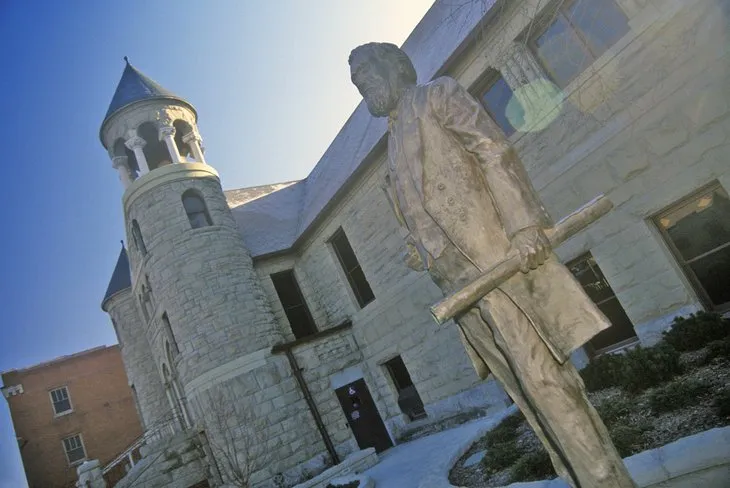 Western Heritage CenterThe Western Heritage Center building in Billings, housing collections on regional history and culture, a key stop among Montana tourist attractions.
Western Heritage CenterThe Western Heritage Center building in Billings, housing collections on regional history and culture, a key stop among Montana tourist attractions.
Bike the Scenic Route of the Hiawatha
The Route of the Hiawatha is widely regarded as one of the most scenic rail-to-trail conversions in the country, starting from Lookout Pass right on the Idaho/Montana border. This approximately 15-mile path primarily follows a gentle downhill grade, allowing riders to mostly coast along the route. The trail is famous for its 10 scenic tunnels and seven towering trestle bridges that span high above the mountainous terrain, offering breathtaking views and a unique biking experience.
Lookout Pass manages the shuttle service and bike rentals, making this scenic ride easily accessible and convenient. The trail and rental services are typically available only during the summer season, roughly between Memorial Day and Labor Day. Trail passes are required for riders. Most people complete the bike ride within approximately two hours, making it a perfect half-day adventure that combines outdoor activity with spectacular scenery, standing out among Montana Tourist Attractions for cyclists.
 A Trestle bridge on the Route of the HiawathaA view of a high trestle bridge on the Route of the Hiawatha bike trail near the Idaho/Montana border, a popular outdoor Montana tourist attraction.
A Trestle bridge on the Route of the HiawathaA view of a high trestle bridge on the Route of the Hiawatha bike trail near the Idaho/Montana border, a popular outdoor Montana tourist attraction.
Frequently Asked Questions About Montana Tourist Attractions
What kind of activities can I expect from Montana Tourist Attractions?
Montana Tourist Attractions offer a wide range of activities, heavily focused on outdoor adventures due to the state’s vast natural landscapes. Popular activities include hiking, backpacking, fishing (especially fly fishing), skiing and snowboarding at resorts like Big Sky and Whitefish, boating on large lakes like Flathead, and scenic drives like the Going-to-the-Sun Road and Beartooth Highway.
Are there historical Montana Tourist Attractions?
Yes, Montana has a rich history tied to the American West, mining, and Native American cultures. Key historical sites include the World Museum of Mining in Butte, the C.M. Russell Museum in Great Falls focusing on Western art, the Moss Mansion in Billings, and the somber Little Bighorn Battlefield National Monument. The state capitol in Helena also offers historical and architectural interest.
When is the best time to visit Montana Tourist Attractions?
The best time to visit Montana depends on the activities you plan to do. Summer (June to August) is ideal for hiking, fishing, boating, and exploring national parks like Glacier and Yellowstone, though it is also the busiest season. Fall (September to October) offers stunning foliage and fewer crowds. Winter (December to March) is prime for skiing and snowboarding. Spring can be variable with melting snow but offers unique experiences like wildlife viewing as animals become more active.
